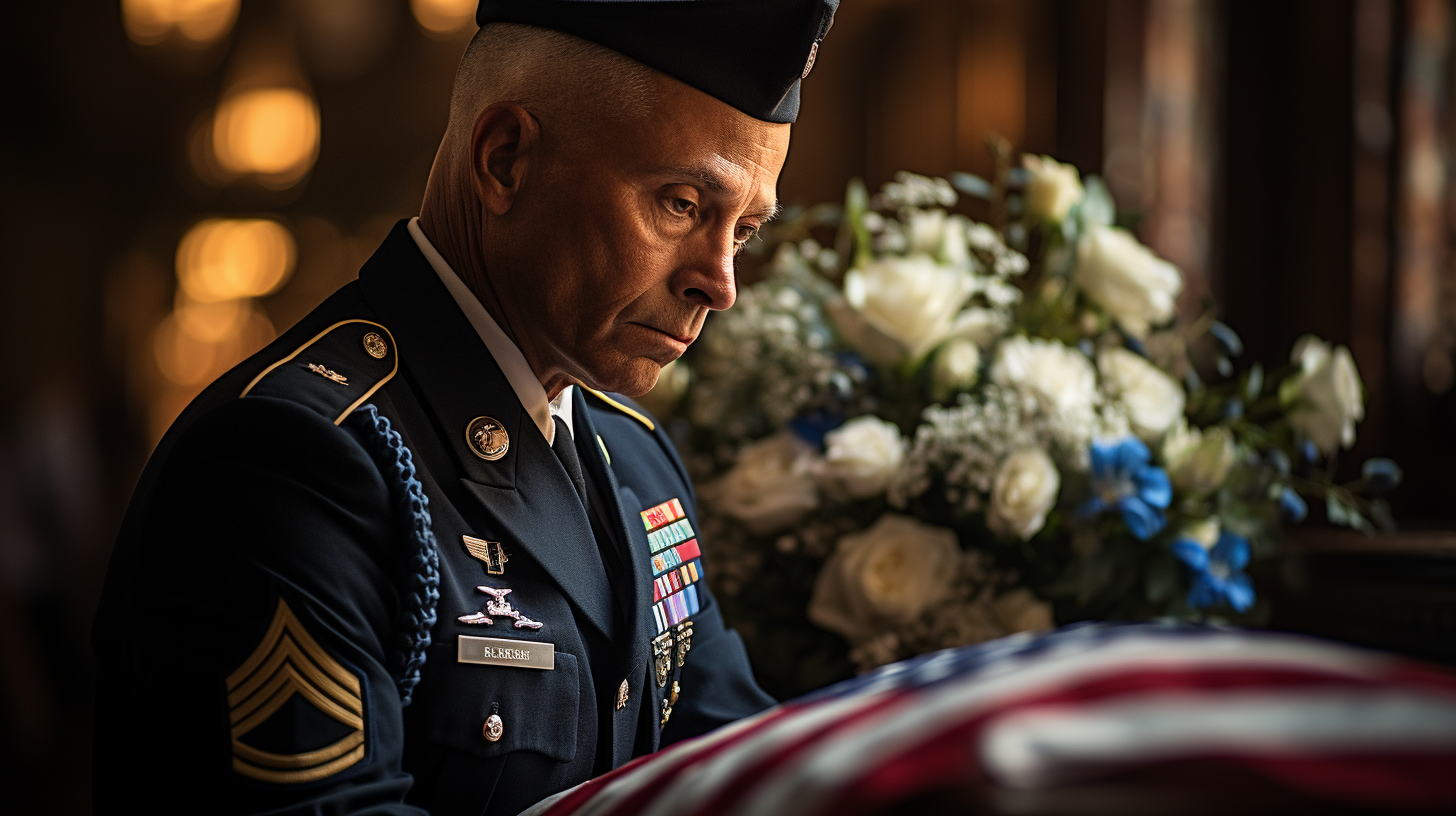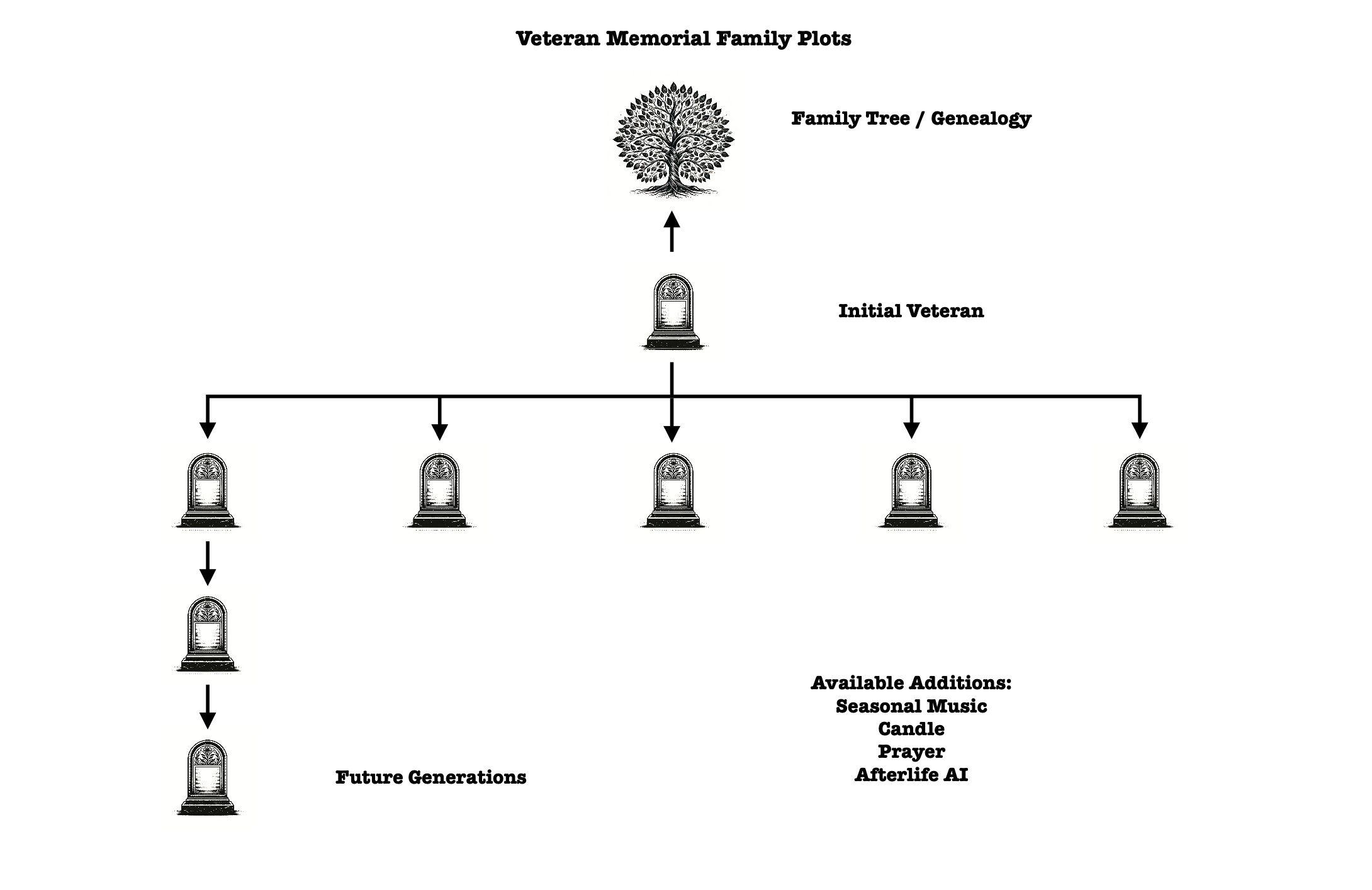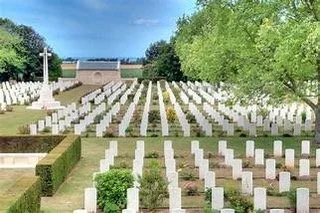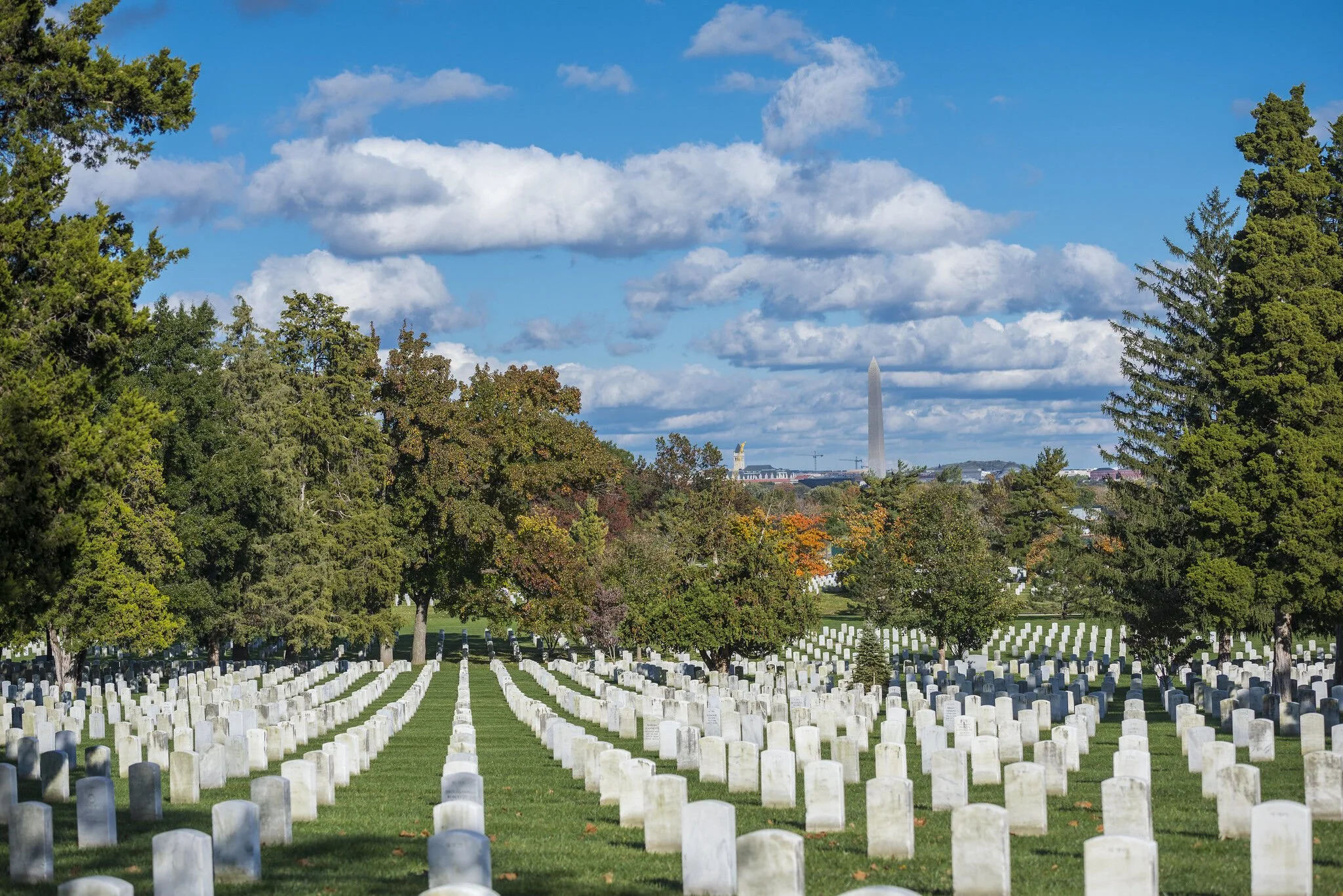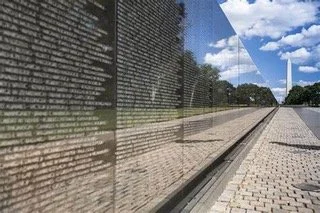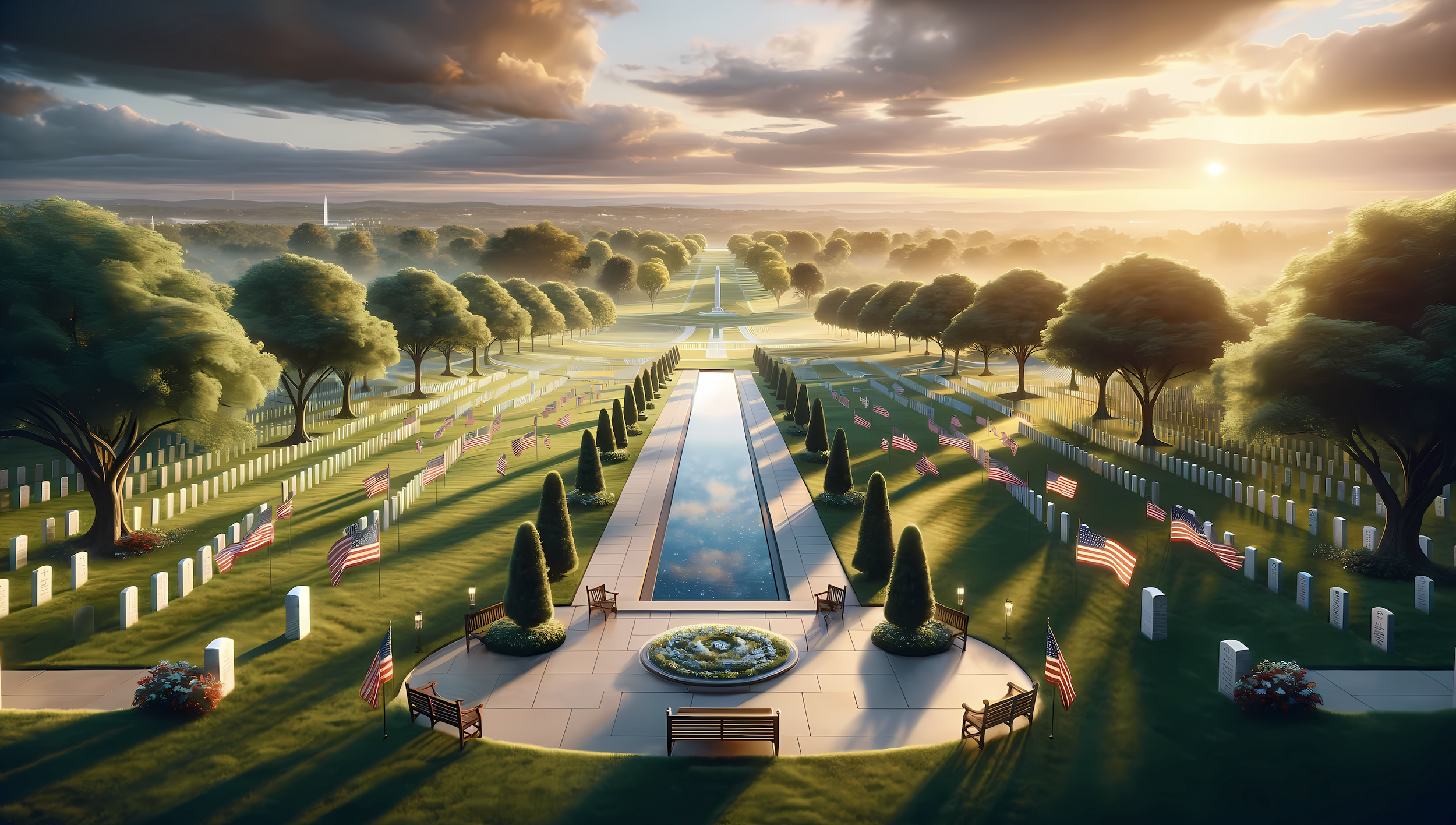
Veteran Memorials
Click to Play

A Sacred Space to Remember and Honor Our Fallen Veterans
Losing a veteran who played a significant role in our lives can be an incredibly painful experience. At iHEART Veterans, we're committed to creating a lasting tribute to those heroes who've touched our lives in countless ways. That's why we've created the iHEART Virtual Memorial Park, a digital sanctuary where the memories of our loved ones can live on forever.
If you've lost a relative, loved one, or friend who was a veteran, we invite you to honor their memory by creating a personalized dedication page on our website. To do so, simply send us an email with the following information:
Dates of Birth and Passing (Required)
Branch of Military (Required)
Obituary (Required)
Photos (Not Required, but Preferred) a. Early Days b. Highschool c. Older d. Events
Favorite Song (Not Required, but Preferred)
Once your loved one's dedication page is live, share it with friends and family who knew them, encouraging them to leave comments and share their own memories. Together, we can ensure that our veterans' legacies live on, and their stories continue to inspire future generations.
To get started, email us at info@iheart-veterans.com. Then, explore our Virtual Memorial Park by clicking on any name below to be transported to their personal dedication page, complete with music to further enhance your experience.
At iHEART Veterans, we believe that every veteran deserves to be remembered and honored for their service and sacrifice. Join us in creating a timeless tribute to our nation's heroes by participating in our Virtual Memorial Park today.
Family Plots Now Available
Pre-Plan Your Memorial
Don’t Let The Memories Fade
Creating your own memorial or obituary before you pass away is a profoundly empowering act. It ensures that your life story is told exactly as you wish, reflecting your true values, achievements, and the legacy you want to leave behind. This preemptive approach also relieves your loved ones of the burden during a time of grief, allowing them to celebrate your life without the stress of planning and decision-making.
Choosing a Family Plot from iHEART Veterans is particularly compelling. It not only secures a place for your story within a dedicated community that honors and respects veteran legacies but also contributes to a broader mission of supporting veterans' well-being. By investing in a Family Plot, you are ensuring that your legacy supports and uplifts the veteran community, creating a ripple effect of remembrance and gratitude that extends far beyond your own story. This service is more than just a memorial; it's a lasting tribute that supports healing and connection within the veteran community.
VIRTUAL MEMORIAL PLOTS
Individual Plots: $295 for lifetime access or $9.95/month.
Family Plots (Roots of Honor): $395 for lifetime access or $12.95/month.
OPTIONAL ADD-ONS
Veteran Verses (Custom Songs): Personalized tribute songs for your loved one. $5.95/month.
iHEART AI Afterlife: An AI-powered digital duplicate of your loved one, with voice and video options. $1,295 one-time or $49.95/month.
Prayers of Peace: Monthly custom prayers by an AI priest tailored to your family’s spiritual needs. $5.95/month.
Flames of Faith: Virtual candles displaying pictures or videos of loved ones in the flame. $3.95/month.
Roots of Honor (Family Tree & Ancestry Report): Detailed family tree and ancestry analysis. $495 one-time.
Season Salutes (Seasonal Memorial Decor): Digital seasonal decorations for the virtual memorial page during holidays or special dates. $2.95/month.
Legacy Video Tribute: Professionally edited video montage celebrating the veteran’s life, including stories, photos, and custom music. $395 one-time.
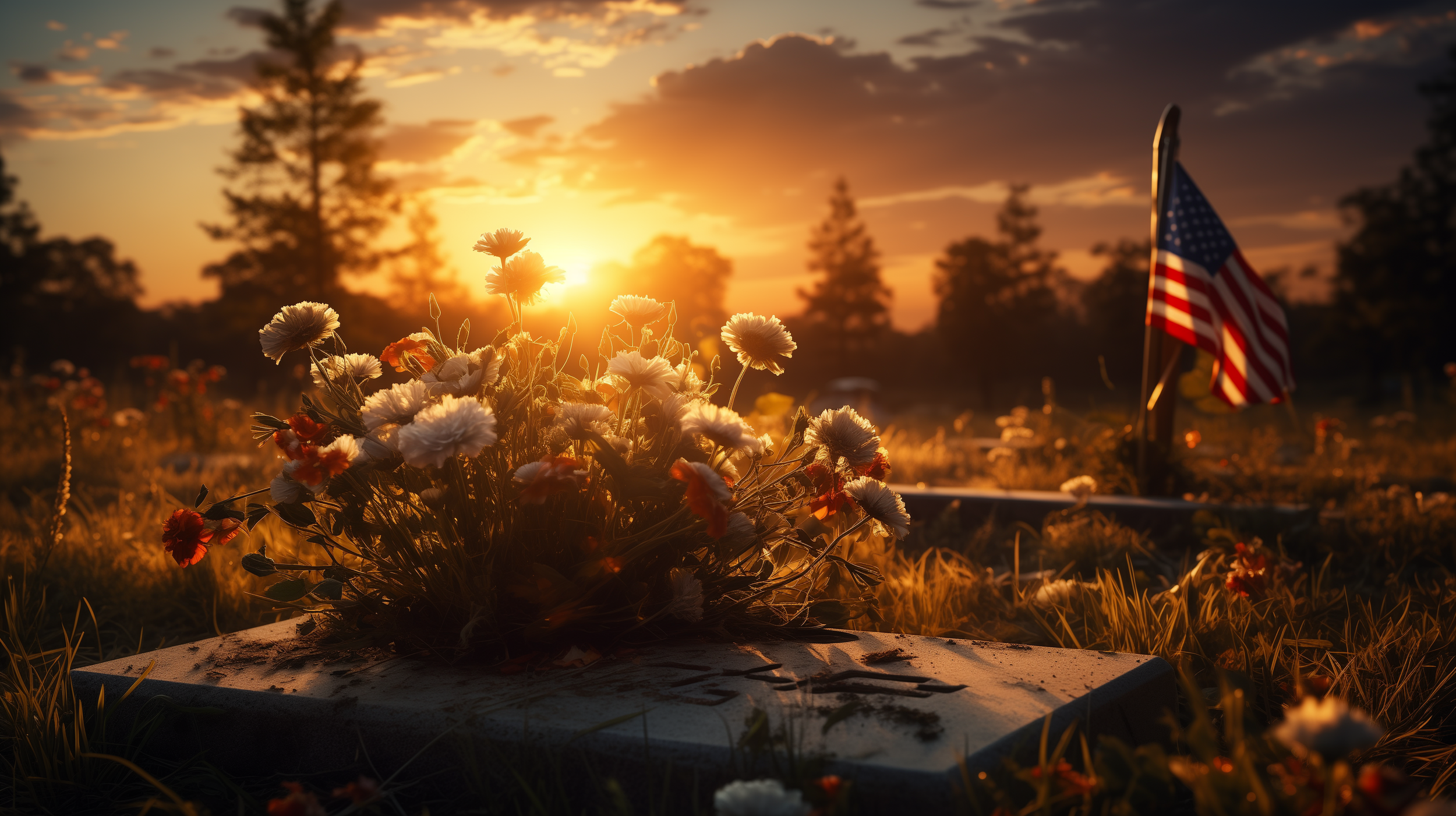
Virtual Memorial Park
A Tribute to Veterans that have Passed
Click on a name
to be brought to
the dedication page.
Alphabetical Order
by Last Name

Memorial Day
The parades are over, the bands have packed away their instruments, the last embers from the BBQ fires extinguished and another Memorial Day has passed with the rightful homage paid to those who gave their, "Last full measure of devotion," to our country.
But please remember that for some, every day is Memorial Day...
Our thoughts and prayers are always with those lost, and with the family members who have lost a loved one in service to our country. And may The Good Lord hold them all close until they are back in the arms of their loved ones...
U.S. Cemetery in Normandy
D-Day HERO’s
RIP

History of Arlington Cemetery
15 June 1864 - Arlington officially became a National Cemetery by order of the Secretary of War, Edwin Stanton. Arlington Estate was established by George Washington's adopted grandson, George Washington Parke Custis, to be a living memorial to the first president. Custis's daughter, Mary, married U.S. Army 1st Lieutenant Robert E. Lee (later Confederate General) in 1831. When he died, Custis left the estate to his daughter Mary Custis Lee for the duration of her life, and upon her death, her eldest son would inherit the property. Robert E. Lee served as the executor of his father-in-law's will and never owned the property
After the Lees abandoned the property at the start of the Civil War, the U.S. Army seized Arlington Estate on the morning of May 24, 1861 to defend Washington, D.C. From the property's heights, rifled artillery could range every federal building in the nation's capital. The estate was seized not to punish the Custis-Lee family, but rather for its strategic value. Three forts were built on the property during the Civil War: Fort Cass/Rosslyn, Fort Whipple/Fort Myer and Fort McPherson (currently section 11). Beginning in June 1863, a large Freedman’s Village, established for freed and escaped slaves, was established in what today are Sections 3, 4, 8, 18 and 20.
On May 13, 1864, the first military burial was conducted for Private William Christman. Brigadier General Montgomery Meigs, Quartermaster General of the U.S. Army, who was responsible for the burial of soldiers, ordered Arlington Estate used for a cemetery. The existing D.C.-area national cemeteries (Soldiers’ Home and Alexandria National Cemeteries) were running out of space — both closed on the day that burials began at Arlington.
Today, approximately 400,000 veterans and their eligible dependents are buried at Arlington National Cemetery. Service members from every one of America’s major wars, from the Revolutionary War to today's conflicts, are interred at ANC. As a result, the history of our nation is reflected on the grounds of the cemetery.
May they all rest in eternal peace...
Discover the Manila American Cemetery
A Tribute to Valor and Sacrifice
Nestled on a serene plateau within Metro Manila’s bustling Fort Bonifacio lies a profound symbol of courage and sacrifice — the Manila American Cemetery and Memorial. This hallowed ground stands as the largest American military cemetery in the Pacific, dedicated to the brave souls who fought and fell during World War II’s intense Pacific campaign.
A Journey Through
History and Heroism
Established in 1948, and meticulously maintained by the American Battle Monuments Commission (ABMC), the Manila American Cemetery spans 152 acres of manicured lawns and solemn beauty. As you step into this sacred space, you are greeted by a breathtaking expanse of white marble headstones, each marking the resting place of one of the over 17,000 American servicemen and women interred here. These rows of markers stand as silent sentinels, bearing witness to the sacrifices made in the name of freedom.
The Walls of the Missing
The cemetery is not only a resting place but also a memorial to those whose fate remains unknown. The Walls of the Missing, inscribed with over 36,000 names, serve as a poignant reminder of the many heroes who fought valiantly but were never recovered. Each name etched into the stone tells a story of bravery and dedication, ensuring that these individuals are never forgotten.
Architectural and Artistic Tribute
At the heart of the cemetery stands a circular memorial, crowned by a serene chapel adorned with intricate mosaic maps and narratives depicting pivotal battles of the Pacific, China, India, and Burma. These artistic tributes offer a visual journey through the theater of war, providing a deeper understanding of the strategic and human elements of these historic conflicts.
A Place of Reflection and Reverence
Visiting the Manila American Cemetery is more than a historical journey; it is an emotional experience. The tranquility of the grounds invites reflection, offering a space where visitors can connect with the past and honor the immense sacrifices made by these heroes. It is a place where military and civilian visitors alike can come to pay their respects, gain insight into the trials of war, and find solace in the beauty and dignity of the memorial.
A Legacy of Remembrance
For iHEART Veterans, the Manila American Cemetery embodies the enduring legacy of our servicemen and women. It stands as a testament to their valor and an eternal reminder of the cost of freedom. As we share the stories and experiences of veterans, we also honor those commemorated in this sacred space, ensuring that their legacy of courage and sacrifice continues to inspire future generations.
The Vietnam Wall

The Vietnam Wall stands as a profound symbol of the immeasurable cost of war. Among its 58,267 names are heroes of every rank, their stories echoing through time. Each name is etched not just in stone, but in the heart of a nation forever indebted.
Every name has a story - of fathers and sons, lost generations of youth, brothers, and schoolmates - stories of valiant women who nursed the wounded, of towns that gave their sons, and friends who went to war together but did not return as one. Each one reflects a tale of courage, sacrifice, and loss.
Among them, Richard B. Fitzgibbon, the first known casualty, whose name is etched alongside his son's, a poignant illustration of the war's reach across generations. From 15-year-old PFC Dan Bullock to thousands barely out of their teens, these names remind us of lives cut short, dreams unfulfilled. A staggering 997 soldiers died on their first day in Vietnam, and 1,448 on their last.
The Wall encapsulates the grief of communities - like Beallsville, Ohio, a small town of 475 that lost six sons, or the heartache of West Virginia, the state with the highest casualty rate per capita.
Yet, the Wall does not merely recount tragedy. It reflects our shared humanity and the collective memory of a nation. Its design, a timeline of casualties, unites comrades in death as they were in life, creating a poignant dialogue between the past, present, and future. Visitors witness their reflections amidst the sea of names - a stark reminder that we are all part of this narrative, and it is our duty to remember.
As more names are added, each one brings with it a fresh wave of grief, but also a sense of honor and remembrance. They might be new additions to the Wall, but they have always been in our hearts. With each name, we pledge never to forget their sacrifice.
The Vietnam Wall isn't just a memorial; it's a testament to the power of every individual story in the grand tapestry of our nation's history. It's a chronicle of our shared loss, a testament to our resilience, and a solemn reminder of the price of freedom. It's not just a Wall; it's a mirror reflecting who we are as a nation - a people committed to remembering, honoring, and learning from our past.
